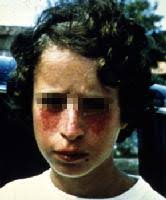Bloom Syndrome:

A 12-year-old girl diagnosed with the Bloom Syndrome, underwent a bone marrow transplant using stem cells from her younger brother at a private hospital in Chennai.
- Bloom Syndrome or BSyn is a genetic disorder, in which the BLM gene, a protein-coding gene, does not function as it should.
- It leads to growth delays, increased vulnerabilities to infections, sensitivity to the sun and an increased risk for certain cancers.
- The BLM gene is a gene that makes a protein involved in maintaining the structure of DNA, when DNA is copied in a cell, and in repairing damaged DNA.
- Mutations in the BLM gene may cause cells to lose their ability to repair damaged DNA, which may lead to abnormal cell growth.
- Other names for Bloom Syndrome are Bloom-Torre-Machacek syndrome and congenital telangiectatic erythema.
- It is inherited in an autosomal recessive This means that if both parents have a mutation in one of their two BLM genes and if the child inherits two of the disease-causing variants of the gene, then the disorder occurs.
- It is seen most commonly in the Eastern European (Ashkenazi) Jewish population.
- Signs and Symptoms:
- Poor growth is a common clinical feature, this happens during the development of the foetus and after birth. Below normal average height and head circumference may be seen.
- There may be abnormalities in certain features such as narrowing of the head and face, prominent ears and nose, long arms and legs and high-pitched voices.
- Skin lesions: The skin is very sensitive to sunlight and red rashes may develop after exposure. Insulin resistance which leads to an increased risk of diabetes, while other issues include immune deficiencies. People with Bloom Syndrome are at a higher risk of contracting infections such as ear and lung infections and also chronic obstructive pulmonary disease (COPD). In adults, male sterility and female infertility may occur.
- Bloom Syndrome increases the risk of developing cancer, and at an early age.
- Treatment: It involves a multi-disciplinary approach. Since there is no specific treatment, the goal is to manage symptoms.




